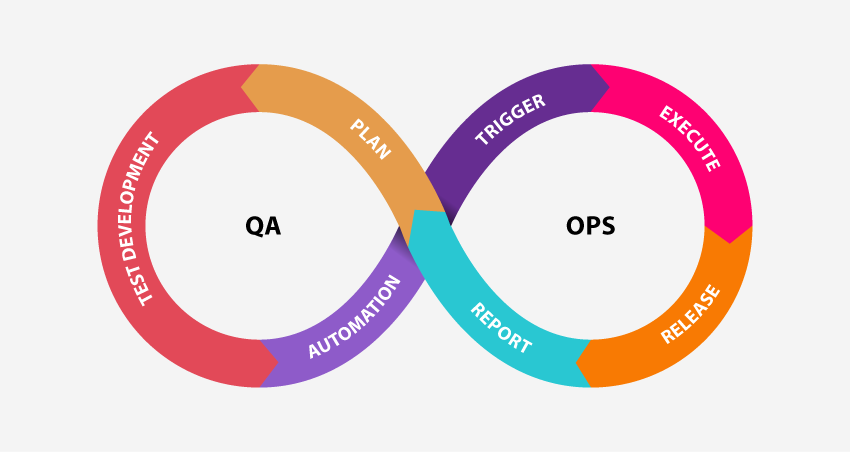Software testing has undeniably been the main factor in any software development success. The reality of software testing has fluctuated due to the rapid advancements in technology evolutions for the last five years. Numerous well-loved software testing tools and methodologies have been introduced and permanently applied in business operations due to their high efficiency and effective optimization.
Are you ready for the software testing trends coming into the year 2024? Ready or not, here they come!
6 Software Testing Trends in 2024
1. Shift Left Testing
Shift left testing is typically executed during the initial software and system development phases to pinpoint potential issues and bugs before they escalate. Its primary goal is to minimize the time spent on debugging, allowing the team to focus more on enhancing features and functionality.
This approach to testing serves to circumvent the detrimental impacts of delayed testing, including inadequate testing resources, overlooked design, architectural, or requirement flaws, complexities in debugging and issue resolution, and project delays.
There are four strategies employed to shift tests to the earlier stages of the software development cycle:
- Model-based shift-left testing
- Traditional shift-left testing
- Incremental shift-left testing
- Agile/DevOps shift-left testing
Want to learn more about Shift Left Testing? Head over to our blog for an in-depth exploration of this methodology.

2. QAOps
A few years ago, a new term, QAOps, started gaining traction within the software industry. By 2021, it garnered increased attention and adoption. QAOps is poised to integrate further into the software development life cycle, becoming increasingly concerned in 2023.
QAOps is a conceptual merge of DevOps and QA, integrating both processes into a unified approach. Quality Assurance (QA) is the final gateway ensuring the delivered software meets high-quality standards.
DevOps strives to unite software development and IT operations. By integrating QA into the DevOps cycle, the resultant amalgamated process is termed QAOps. This integration allows QA engineers to collaborate with developers during the software’s developmental phases.
The emergence of QAOps is expected to introduce a fresh software process model, heightening the overall quality of the development process.
3. AI and Machine Learning-Based Testing
As the reliance on automation in testing increases, the evolution of software testing trends incorporating AI and ML technologies significantly enhances testing methodologies. For instance, AI algorithms are leveraged to generate test cases, while ML techniques assist in identifying patterns and irregularities within test data. The utilization of AI and ML in automated testing is expected to continue growing and evolving as businesses seek to expedite processes, improve accuracy, and streamline testing methodologies.
4. Robotic Process Automation (RPA)
According to research and market surveys, the anticipated revenue from RPA is projected to reach approximately 3.4 billion US dollars by 2027, exhibiting a remarkable 28.2% year-on-year growth. RPA, also known as robotic process automation, primarily automates repetitive tasks that do not require manual intervention.
Initially, it records the actions performed by a tester to create a reference. Using artificial intelligence (AI) and machine learning (ML), RPA replicates these actions across multiple scenarios on the screen. Its automated nature significantly reduces both time and cutting down unnecessary operational testing expenses for businesses in the long run, although the upfront cost can be a lump sum.
5. IoT Testing
IoT refers to a network of interconnected physical devices that exchange data and communication, such as appliances, vehicles, and various household items. The exponential growth of IoT testing stems from the increased emphasis on security and functional testing, aiming to guarantee these interconnected devices’ seamless operation and effectiveness. The demand for IoT testing remains extremely high to validate that current IoT systems and gadgets shall continue to meet users’ expectations and perform their functions as intended.
6. In-Sprint Test Automation
The Agile methodology mandates rapid work and frequent release cycles within a sprint that typically spans 2 to 4 weeks. However, this pace often leaves insufficient time for comprehensive software testing within the sprint timeline. Testers frequently test a previous version, leading to a significant drawback. Releasing a version with only regression and DDT methods might allow some bugs to slip into production, resulting in potentially colossal costs, sometimes up to 100 times more.
In-sprint test automation addresses this challenge by enabling testers to work concurrently with the development process within the same sprint. This approach eliminates the need to wait until development is complete, allowing testers to commence their testing activities during development. Consequently, this helps improve software quality and will enable testers to align their testing efforts with the current version under development.
The Evolution Of Software Testing Trends 2024
Staying afloat with the trends is easier said than done, especially in this era when everything can be alternated, evolved, and rejected overnight due to mundane reasons. While it’s challenging to get ahead with the trends in the software testing industry, recognizing the pattern of favorite trends is surprisingly doable; the fact that the industry has been digging itself into AI and machine learning in the past decade proves it all.
Being acquainted with upcoming trends and seamlessly integrating these technological advancements into their routine testing procedures to gain a competitive edge in the software testing arena. Software testers must adapt to varying device features, catering to the requirements of both corporate users and end consumers. Keeping up-to-date with the latest software testing trends is crucial for QA engineers to deliver top-notch software products in high demand across various industries.
ContactContact
Stay in touch with Us




